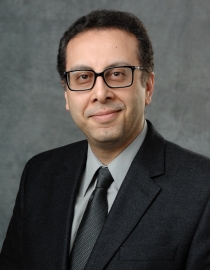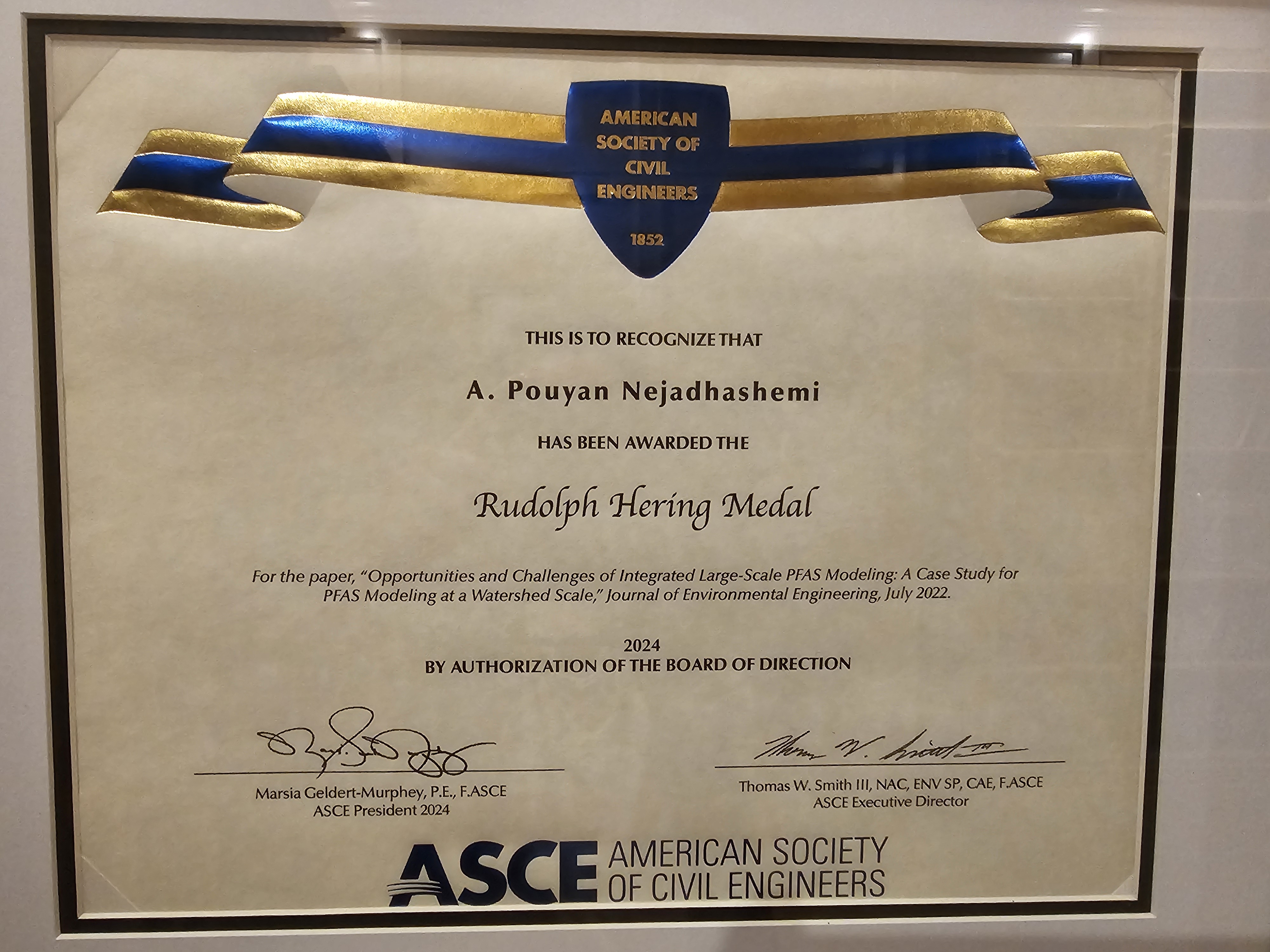MSU Researcher Receives Rudolf Hering Medal from ASCE
The Rudolf Hering Medal of the ASCE was instituted and endowed in 1924 by the Sanitary Engineering Division (now the Environmental & Water Resources Institute) in honor of Rudolf Hering, past Vice President of the Society.
Pouyan Nejadhashemi, Michigan State University Research Foundation Professor in the Department of

Biosystems and Agricultural Engineering and the Department of Plant, Soil, and Microbial Sciences, has received the 2024 Rudolf Hering Medal from the American Society of Civil Engineers (ASCE).
The American Society of Civil Engineers (ASCE) is the nation’s oldest national civil engineering society. It represents more than 160,000 members of the civil engineering profession in 177 countries. The Rudolf Hering Medal of the ASCE was instituted and endowed in 1924 by the Sanitary Engineering Division (now the Environmental & Water Resources Institute) in honor of Rudolf Hering, past Vice President of the Society.
Nejadhashemi led the team that produced the paper “Opportunities and Challenges of Integrated Large-Scale PFAS Modeling: A Case Study for PFAS Modeling at a Watershed Scale” along with Anna Raschke, Vahid Rafiei, Nicolas Fernandez, Afshin Shabani, and Shu-Guang Li.
Poly- and perfluoroalkyl substances (PFAS) are a class of over 4,000 chemicals. Many have been used in fire-fighting foams, water, stain-resistant coatings, and more. Perfluorooctanoic acid (PFOA) and Perfluorooctane sulfonate (PFOS) are two types of PFAS chemicals that are studied. Scientists and health professionals are concerned about PFAS due to their widespread presence in the environment and their resistance to natural degradation. 
The study aimed to assess the capabilities and shortcomings of commonly used models to study PFAS fate and transport. The study evaluated the use of three models—a surface water model, a groundwater model, and a stream model—to simulate the fate and transport of PFAS in a large watershed. The results from the study showed that the system adequately captured the overall trends for PFOS but underestimated the magnitude of PFOA due to a lack of historical information and information from diffusive sources or non-point sources of pollution. It shows that it is essential to organize monitoring studies and consider model enhancements to understand the fate and transport of PFAS better.



 Print
Print Email
Email



